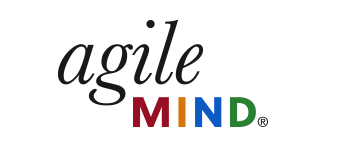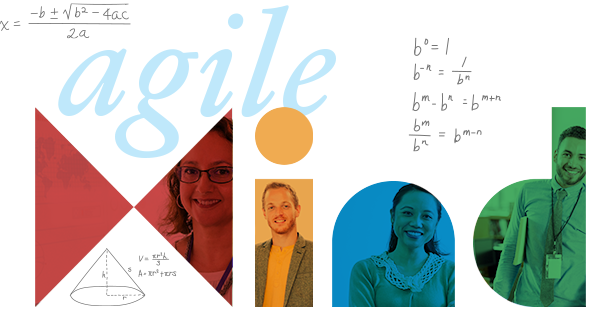Failure to succeed academically is often not about deficiencies in students’ content knowledge or their ability to learn. Explicitly addressing educator and student beliefs, and their resulting actions in academic settings, are key to better system-wide outcomes.
Powerful research suggests that developing students’ social and emotional learning (SEL) competencies and learning mindsets can dramatically impact student success. This research, strengthened by the experiences of educators across the nation, has spurred new federal law (ESSA) and an increasing number of states to establish standards for SEL, particularly for adolescents.
The path from research and promise to effective practice in classrooms and schools is not always clear. Agile Mind, in collaboration with the Charles A. Dana Center at The University of Texas at Austin and districts across the country, has been applying SEL and learning mindset research in practice for over 10 years. Based on that experience, here are four things to consider when integrating SEL and learning mindset work into your district’s plan.
Find a different solution when the problem is not just about the math.
Gaps in students’ content knowledge are common, but many fail to thrive in school for very different reasons. Adolescents face numerous barriers to success in school—academic, economic, psychological, and social—and current research shows that students’ beliefs about themselves, and how those beliefs affect their academic behaviors, are critical to their achievement. As a result, more or different subject-matter instruction can have little impact on student success. In addition to students’ beliefs and behaviors, educators’ beliefs about their students’ capabilities influence expectations and instructional practice. Providing relevant professional development for educators and explicit instruction for students to develop SEL competencies and learning mindsets often prove more effective than traditional academic interventions.
Address multiple strands of learning research with a cohesive program.
Developing specific competencies in isolation, such as growth mindset or grit, often fails to have lasting impact on students. However, when these and other learning research concepts are taught together, more students benefit in more enduring ways. The most effective programs cultivate competencies in parallel, such as: developing a learning mindset, tapping individual motivation, applying effective effort (grit), using self-management strategies to overcome challenges, collaborating and communicating effectively, and setting and achieving academic goals. Addressing multiple competencies goes far beyond a book study. It requires a carefully designed and tested program and yields significantly greater results.
Increase long-term effectiveness by integrating SEL strategies with rigorous and relevant academic content.
Educators and students can benefit from developing a conceptual understanding of SEL and learning research, but it is a very different thing to know how to put them into practice. The best way to develop these capabilities in students is to teach them in the context of rigorous and relevant academic content, giving them opportunities to immediately apply what they learn to real and relevant tasks. By doing so, students are able to try on new ways of thinking, apply and refine new approaches, develop a toolbox of new skills and strategies, and ultimately make the new knowledge stick.
Integrate these new capabilities into the district curriculum within your existing schedules and structures.
The most efficient way to bring these new mindsets and learning competencies to a district is to use an existing scheduling structure. For some, summer school provides a powerful opportunity: instead of focusing exclusively on remediation or credit recovery, districts can use summer school to proactively prepare students for success. Advisory or study skills periods are another way to reach students: by adding structure and purpose to that time, students can develop these capabilities while also accelerating their academic work. Focusing a set of professional development days on these concepts is a third approach that will help educators apply new ideas and strategies to their practice. By identifying an existing scheduling opportunity, districts can easily bring these concepts to students and educators more quickly and without disruption to the standard academic schedule.
Educating adolescents presents unique challenges, and academic content is only part of the picture. Everyone can learn. Everyone can improve. And with a carefully designed plan, developing students’ attitudes, beliefs, and social and emotional learning competencies can transform their potential—in school and beyond.




